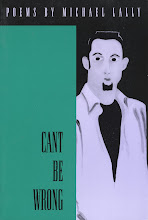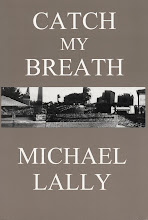
This new book by Ben Ratliff is a pretty decent analysis of the significance of Coltrane’s music and it’s impact.
I don’t agree with some of his opinions about what works and what doesn’t among the extensive recordings Coltrane made. But I appreciate how well Ratliff articulates his position and the wealth of information he brings to support it.
He’s done his research. All I have are my memories and Coltrane’s recordings. I was around the New York jazz scene when he made his major breakthroughs, and witnessed some of the live events Ratliff refers to. At the time, I played piano “jazz music” so have some experience with it.
What baffles me, mildly, is how articulate Ratliff can mostly be, and others who write about music—either theirs or others, like say Dylan in his CHRONICLES—and then at times not be at all. Even with my experience as a musician, sometimes I can’t figure out what they’re talking about (Dylan especially).
Or when I can figure it out, I wonder why they don’t state it more plainly for the non-musician reader. Like Ratliff’s constant referring to “ii V” etc. in terms of chord changes and not explaining, for the layman, what he means, when he explains other things that are a lot more obvious (some of which he gets wrong, from my perspective).
Another mildly baffling thing for me are the blurbs on the back of the book, by three writers whose work I respect: Luc Sante, George O’Brien and Phillip Lopate (the latter I published as a poet in an anthology I edited in the 1970s—NONE OF THE ABOVE). They all write as if they understand everything Ratliff says in this book. Lopate not only highly praising it, but comparing other books on jazz unfavorably by saying Ratliff isn’t guilty of “the usual jazz book gush.” Well, yes and no.
There’s a lot of gush in this book, but it’s well deserved. Just as it is in most of the “jazz books” I’ve read, as in most books about music and art and so on. Gush expresses what motivates the writer to explore the topic in the first place. Most books—especially those that involve heavy research and sometimes years of tracking down interviewees and private and public historical records etc.—has a little gush in it, or the author would have given up long ago.
Anyway, I thought it was kind of a cheap shot, since Lopate doesn’t name the “jazz books” he’s referring to so unfavorably. And I’d be especially surprised if Lopate, as well as Sante and O’Brien, really understood everything in the book well enough to support their praise. Not that the book doesn’t deserve praise, just that it isn’t the best book on “jazz” or a “jazz musician.”
But in the end, it’s worth reading, no question. Most of it is really interesting, at least to me. What I like most is the seriousness with which Ratliff approaches the importance and influence of Coltrane’s music, (though the writing doesn’t take itself too seriously, most of the time) as well as Coltrane’s example and the myth that grew up around that example and its impact.
Part of the book’s premise is that Coltrane was the one whose music led jazz up a dead end before he died unexpectedly, stranding the many, mostly young musicians, and not just in jazz, that he influenced. The music had nowhere to go without Coltrane showing the way anymore, and along with other historical and cultural circumstances, contributed to jazz losing its way as a popular art, or even as an esoteric one that had an inordinate influence on other arts and the culture at large.
Ratliff builds a great case for that premise, as others have before him, but in my experience, living in or hanging around Manhattan over a lifetime, and other cultural centers of influence, various arts seem to have their day as the major influence in leading the way for innovative techniques and theories, and then lose steam, as any “movement” or “style” or experimental explorative foray always does.
But this book is, in its way, a great little history of jazz, and the scene it was a part of and influenced, in the 1950s and ‘60s. If you dig Coltrane and his music, I think you’ll like most of the book, as I did. But probably also like me, you’ll quibble with some of the opinions in it that—as is often the case in books about historical figures and their accomplishments, or lack of them—are expressed as facts.
















3 comments:
Lal--You might find some clarifications on John Coltrane if you go to
radioopensource.org/speaking-
of-coltrane-five-conversations/
and scroll down to and click on
Michael S. Harper
who has plenty to say about Trane and his music and about his own poem, "Dear John, Dear Coltrane."
Bob Berber
I hear you about Harper and will check that site out. But I hope my post didn't read like I was confused about 'Trane or his music, what I meant to convey was that the author, Ratliff, is at times confusing in the way he writes about that music, that's all. Plus Ratliff is writing in support of a theory of what was important about it and therefore which recordings were "best" or moved the music forward or etc. etc. whereas anything Coltrane did I dig, period. Yeah, some is soothing and some is jarring, some experiments with approaches no one's tried before, or at least he hadn't, and others are more traditional, but any time he picked up his horn and shared what went through it with the rest of us, I am grateful for.
I don't need no stinkin' books on Trane: 1964; me with a fake ID at age 20 in San Francisco; at a jazz club (the Both/And or maybe the Blackhawk); sitting at a front row table so close I could almost touch Trane; never, ever, ever, ever, ever, ever, ever, ever have I felt such power and grace in any music. 43 years later I've not fully recovered.
~ tom
Post a Comment